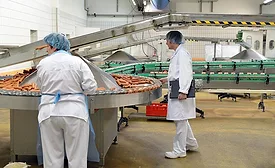Home » Keywords: » food quality assurance
Items Tagged with 'food quality assurance'
ARTICLES
CANNABIS PRODUCTS | NOVEMBER 2019
Using inspection and detection equipment in cannabis edibles manufacturing
Inspection and Detection 101: Selecting the most suitable inspection and detection equipment depends on cost, material to be detected and the type of product.
November 26, 2019
CANNABIS PRODUCTS | JUNE 2019
Cannabis testing is an exact science - regulations are not
June 24, 2019
Quality Assurance
Autonomous Machine Vision offers processors improved inspection
Inspekto CEO explains how Autonomous Machine Vision can change the production process
November 7, 2018
FSMA
Nestlé expands QAC in Dublin, OH in anticipation of FSMA
Expansion makes it Nestlé’s largest testing facility.
August 16, 2016
DuPont Nutrition & Health celebrates winner of 13th annual food quality and safety award
Backyard Farms LLC was the 2013 winner of the annual award.
April 23, 2014
Elevate your expertise in food engineering with unparalleled insights and connections.
Get the latest industry updates tailored your way.
JOIN TODAY!Copyright ©2025. All Rights Reserved BNP Media.
Design, CMS, Hosting & Web Development :: ePublishing







